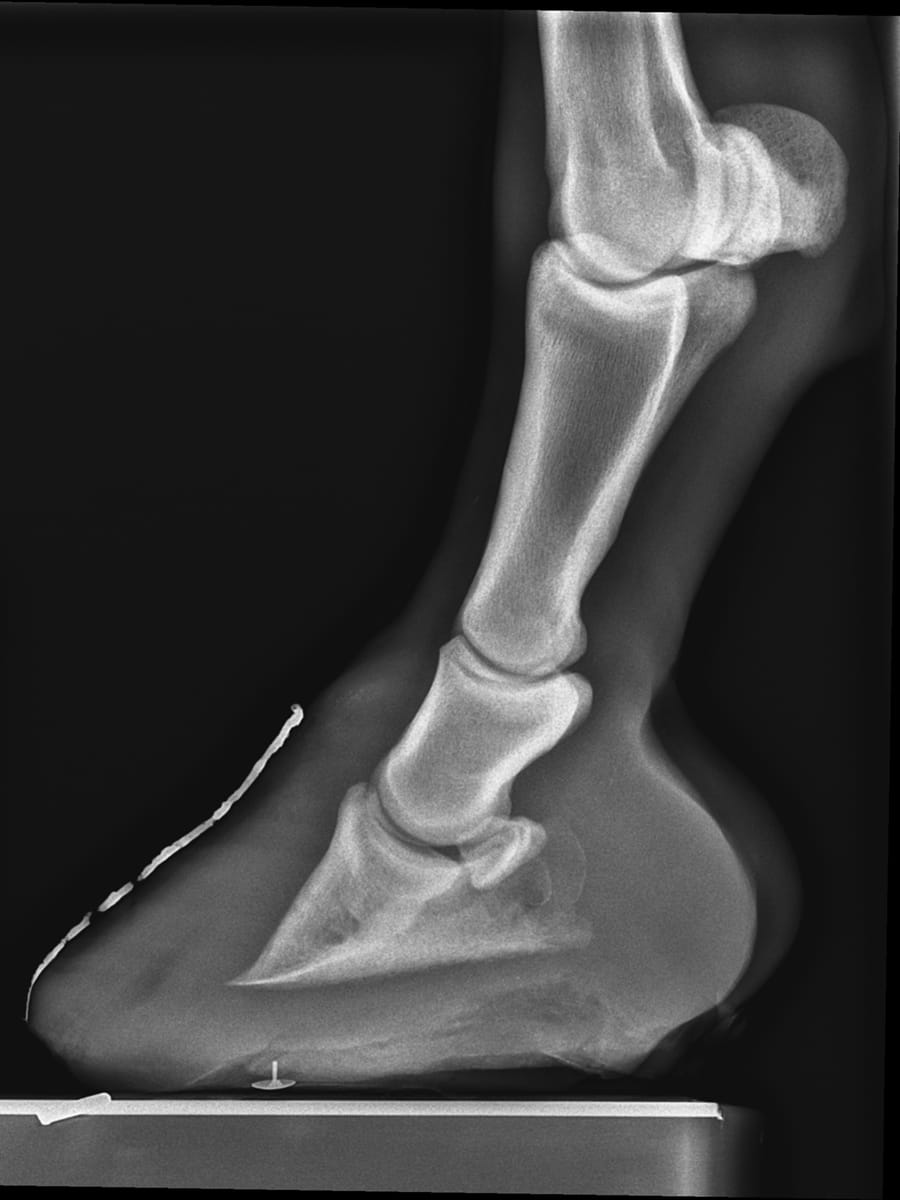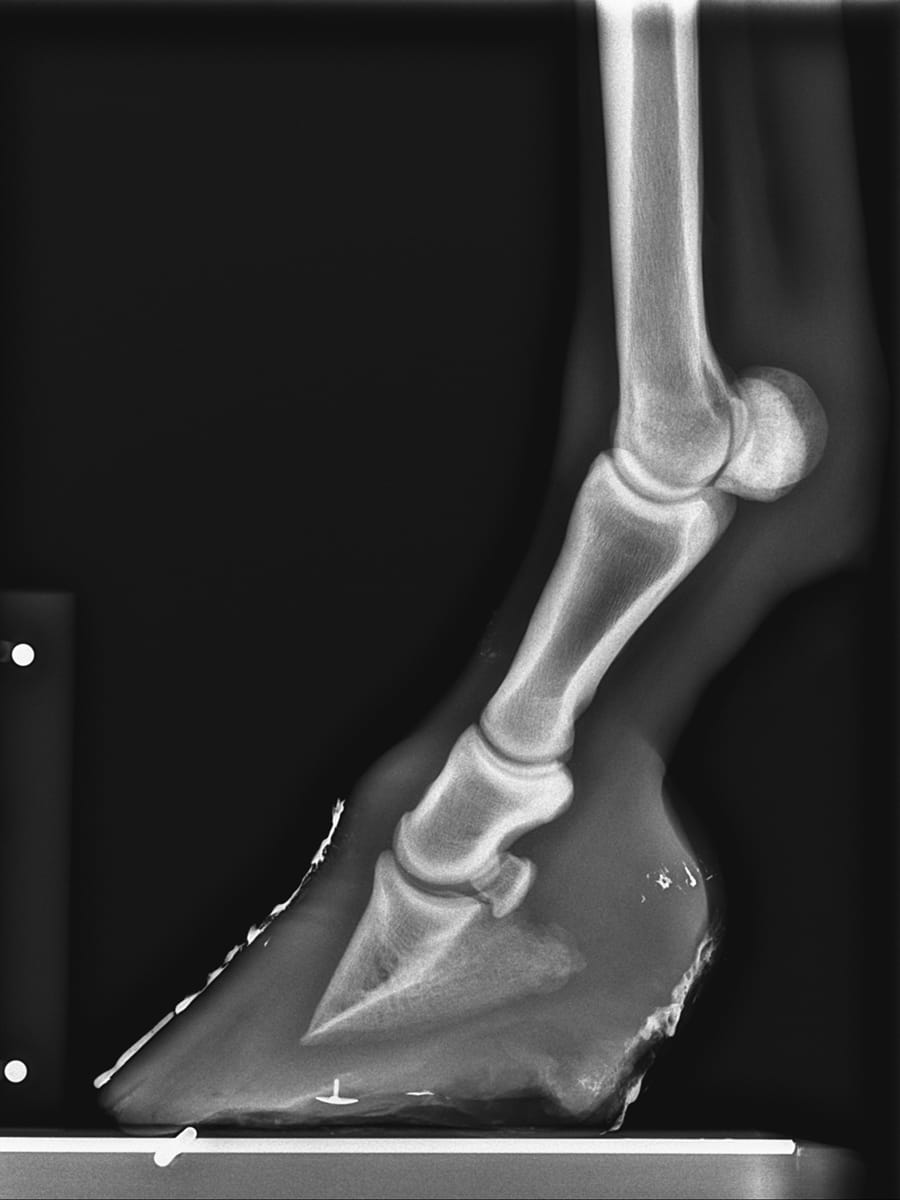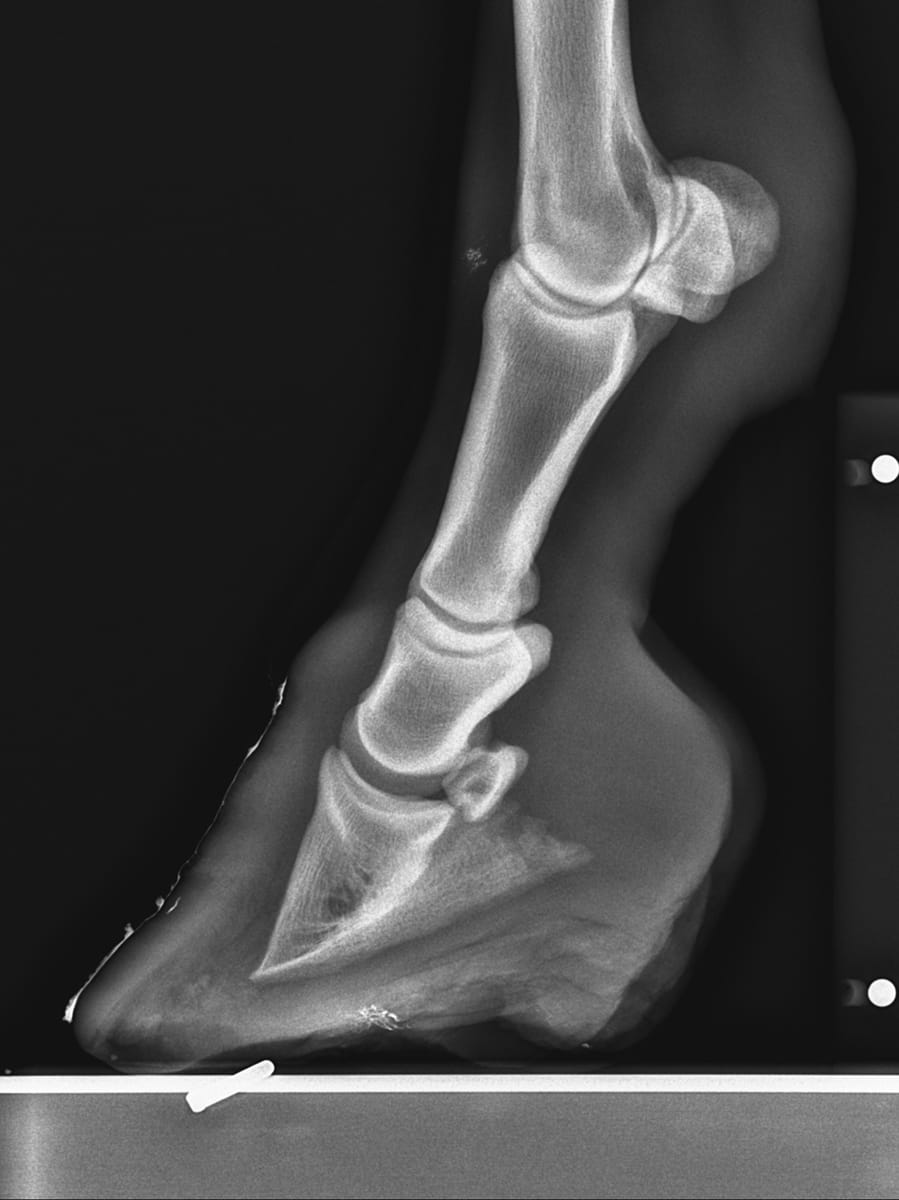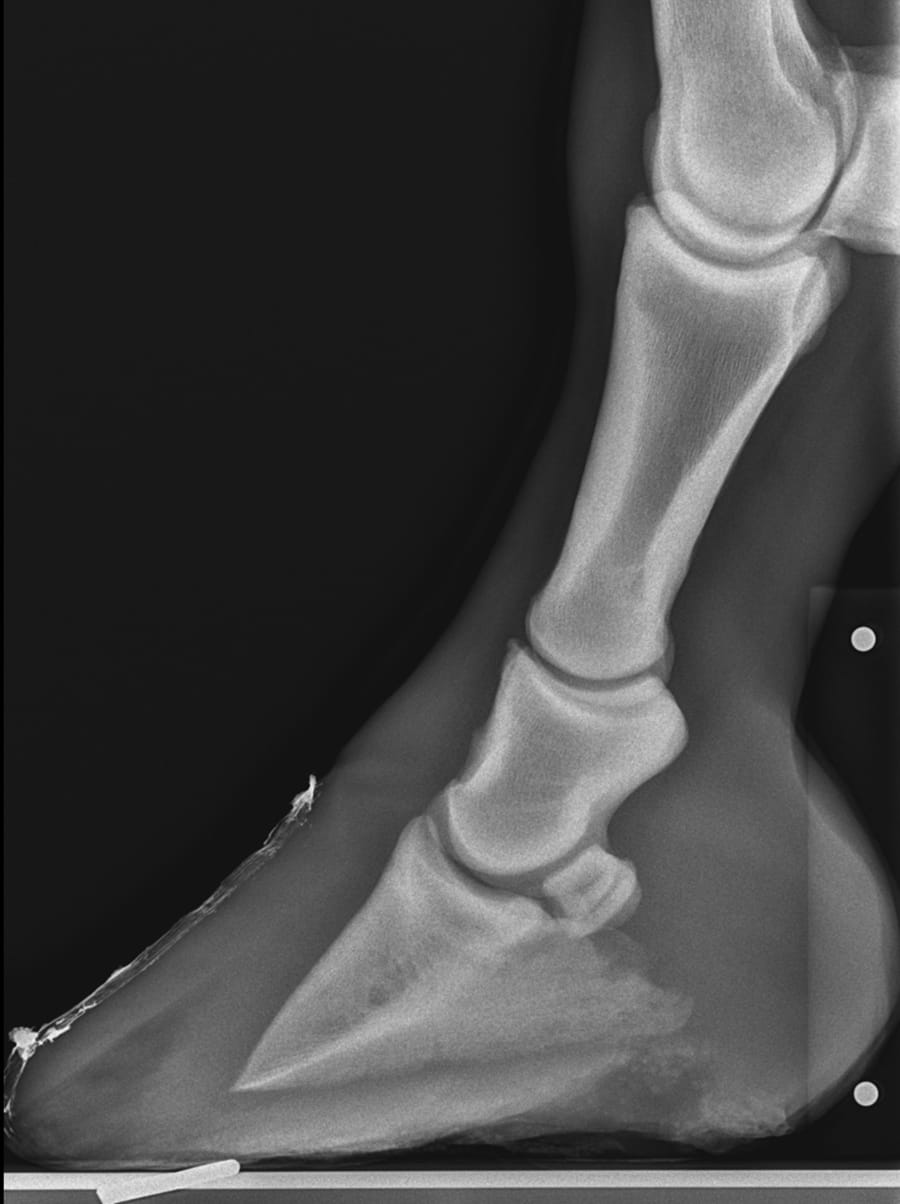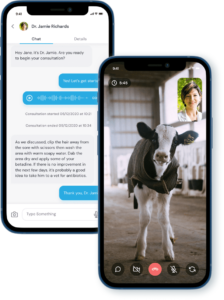Laminitis diagnosis, prevention and treatment
What is laminitis?
In simplistic terms, lamellae (also known as laminae) are the velcro that hold the coffin bone* inside the foot to the hoof wall. In laminitis, the “velcro” attachment fails, allowing the coffin bone to move from away from the hoof capsule. Laminitis simply means inflammation of the laminae. Laminitis can vary in severity from very mild (just bruising seen in the white line at a trim) to penetration of the sole by the coffin bone.
Some of the changes in laminitis are irreversible, however if the changes are mild enough, then the horse may be able to lead an active life. If the changes are severe, then although soundness may be possible, the horse will always have a lack of suspension in the foot and is likely to need help with concussion (like losing springs from a trampoline).
*The coffin bone is also known as the pedal bone and phalangeal 3 (P3).
Latest research on Laminitis
The relatively recent research discovery that prolonged hyperinsulinaemia (high blood levels of insulin) can induce laminitis in clinically normal horses and ponies has been a huge breakthrough in understanding laminitis. Previous to this, much of the research into laminitis was on a starch/grain overload model, where changes in the hindgut lead to toxins entering the blood circulation. This is quite different to what happens with hyperinsulinaemia.
When horses consume dietary sugar or starch (which is a chain of glucose units), insulin is released by the pancreas to stop blood glucose levels rising. If the insulin levels are high enough, it has been shown in research that the insulin can actually directly act on lamella epithelial cells to cause laminitis.
Research has found that although lamella epithelial cells do not have a specific receptor for insulin to act on them, they do have a receptor on them which has been called IGF-1 (insulin-like growth factor 1). This receptor is normally affected by a peptide called IGF-1 which very similar in structure to insulin. The current thought is that IGF-1 receptors may “accidently” get turned on by high blood insulin levels. When IG1 receptors are activated, it tells the cells to divide. This is possibly a way that the hoof is able to grow normally (release small amounts of lamella attachments at a time), but if too many are activated at once (as with high insulin levels), it may be that the cells “think” they all have to divide and separate at the same time – thus causing laminitis.
How to prevent and treat Laminitis?
The treatment and prevention of laminitis have the same components.
We must avoid inflammation of the lamellae (laminitis) within the hoof capsule. There are many causes of laminitis, but insulin dysregulation is by far the most common. Exercising* our horses, keeping our horses at an appropriate body weight and feeding an appropriate feed are all important to avoid insulin dysregulation and laminitis.
Trimming, shoeing and booting all have a huge effect on the health and capabilities of a hoof to cope with laminitis. A good trim does not prevent laminitis, but a bad trim will certainly make things worse. Trimming and support need to provide an appropriate breakover for the hoof, adequate solar thickness, and an appropriate sharing of the weight bearing load between structures in the hoof.
Most cases of laminitis are preventable. We recommend a yearly hoof check with radiographs, photographs, condition scoring and blood testing if required.
* Exercise may not be appropriate once a horse has developed laminitis and should be assessed on a case by case basis.
Why you should x ray all cases of laminitis.
All horses with laminitis should have regular radiographs taken. Radiographs can show the current damage, give an indication of prognosis, and should be used to measure the success of the treatment given.
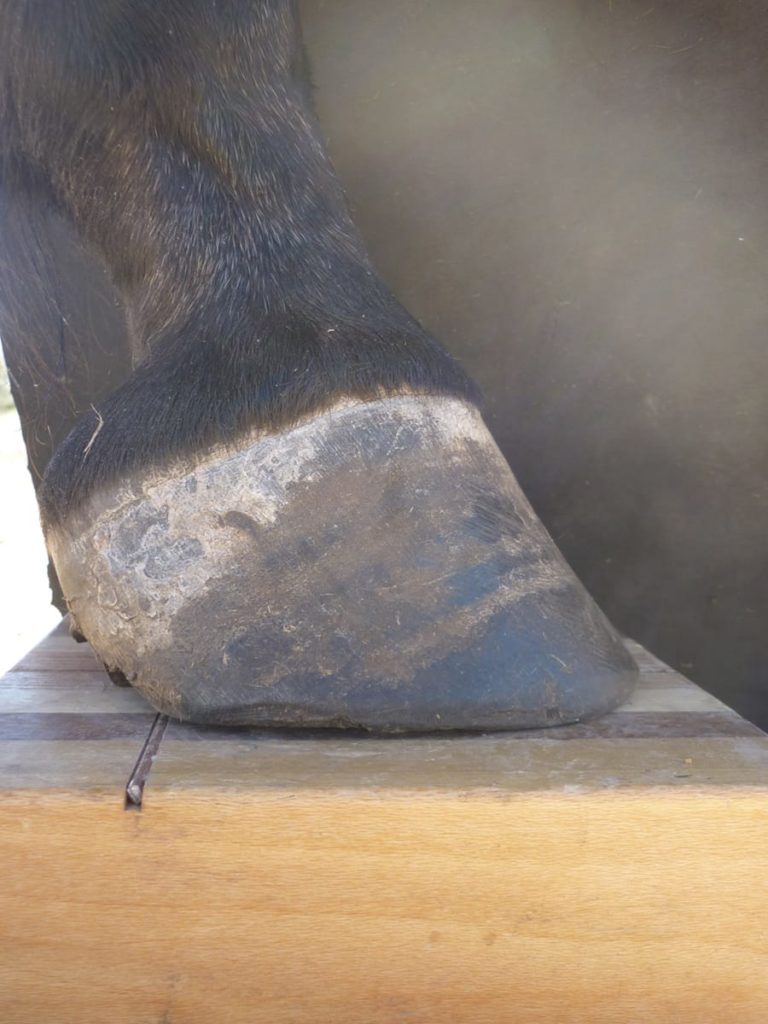
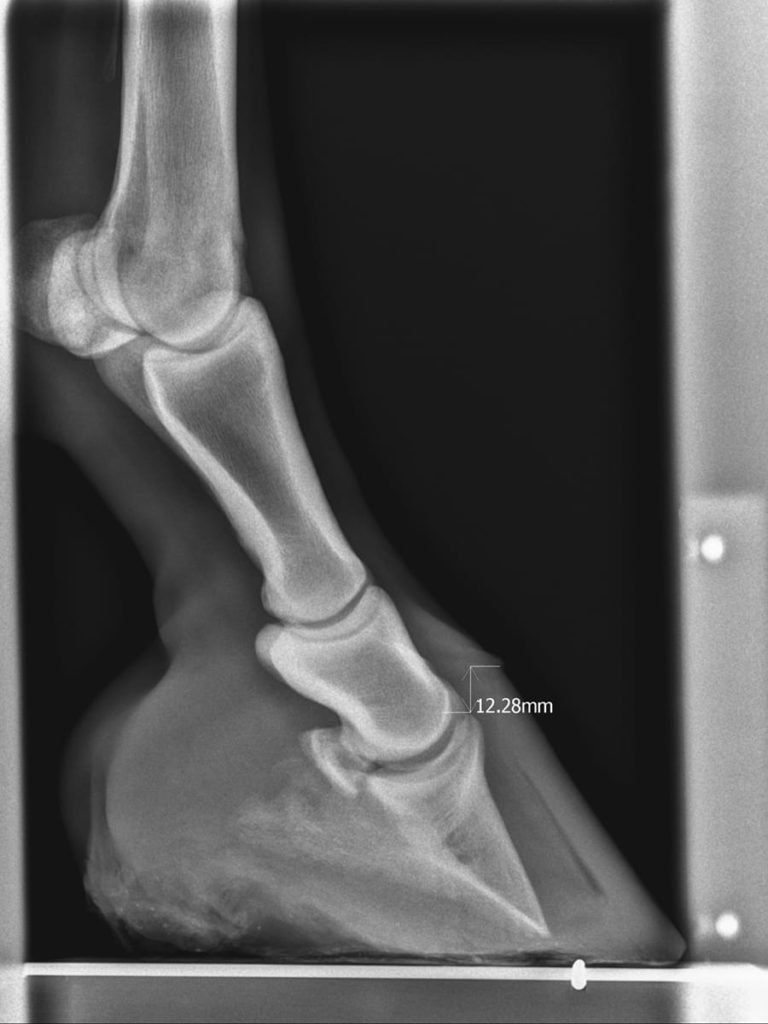
This horse is a “sinker” which describes massive acute lamella separation that results in distal descent of the coffin bone into the hoof capsule.
Whilst it is a normal looking hoof capsule, the radiograph clearly shows the catastrophic internal damage.


